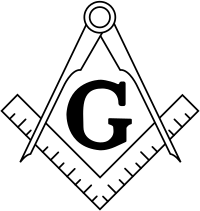
Photo from wikipedia
Given that a significant fraction of buildings and architectural heritage in Europe’s historical centers are masonry structures, the selection of proper diagnosis, technological surveys, non-destructive testing, and interpretations of crack… Click to show full abstract
Given that a significant fraction of buildings and architectural heritage in Europe’s historical centers are masonry structures, the selection of proper diagnosis, technological surveys, non-destructive testing, and interpretations of crack and decay patterns is paramount for a risk assessment of possible damage. Identifying the possible crack patterns, discontinuities, and associated brittle failure mechanisms within unreinforced masonry under seismic and gravity actions allows for reliable retrofitting interventions. Traditional and modern materials and strengthening techniques create a wide range of compatible, removable, and sustainable conservation strategies. Steel/timber tie-rods are mainly used to support the horizontal thrust of arches, vaults, and roofs and are particularly suitable for better connecting structural elements, e.g., masonry walls and floors. Composite reinforcing systems using carbon, glass fibers, and thin mortar layers can improve tensile resistance, ultimate strength, and displacement capacity to avoid brittle shear failures. This study overviews masonry structural diagnostics and compares traditional and advanced strengthening techniques of masonry walls, arches, vaults, and columns. Several research results in automatic surface crack detection for unreinforced masonry (URM) walls are presented considering crack detection based on machine learning and deep learning algorithms. In addition, the kinematic and static principles of Limit Analysis within the rigid no-tension model framework are presented. The manuscript sets a practical perspective, providing an inclusive list of papers describing the essential latest research in this field; thus, this paper is useful for researchers and practitioners in masonry structures.
Journal Title: Materials
Year Published: 2023
Link to full text (if available)
Share on Social Media: Sign Up to like & get
recommendations!